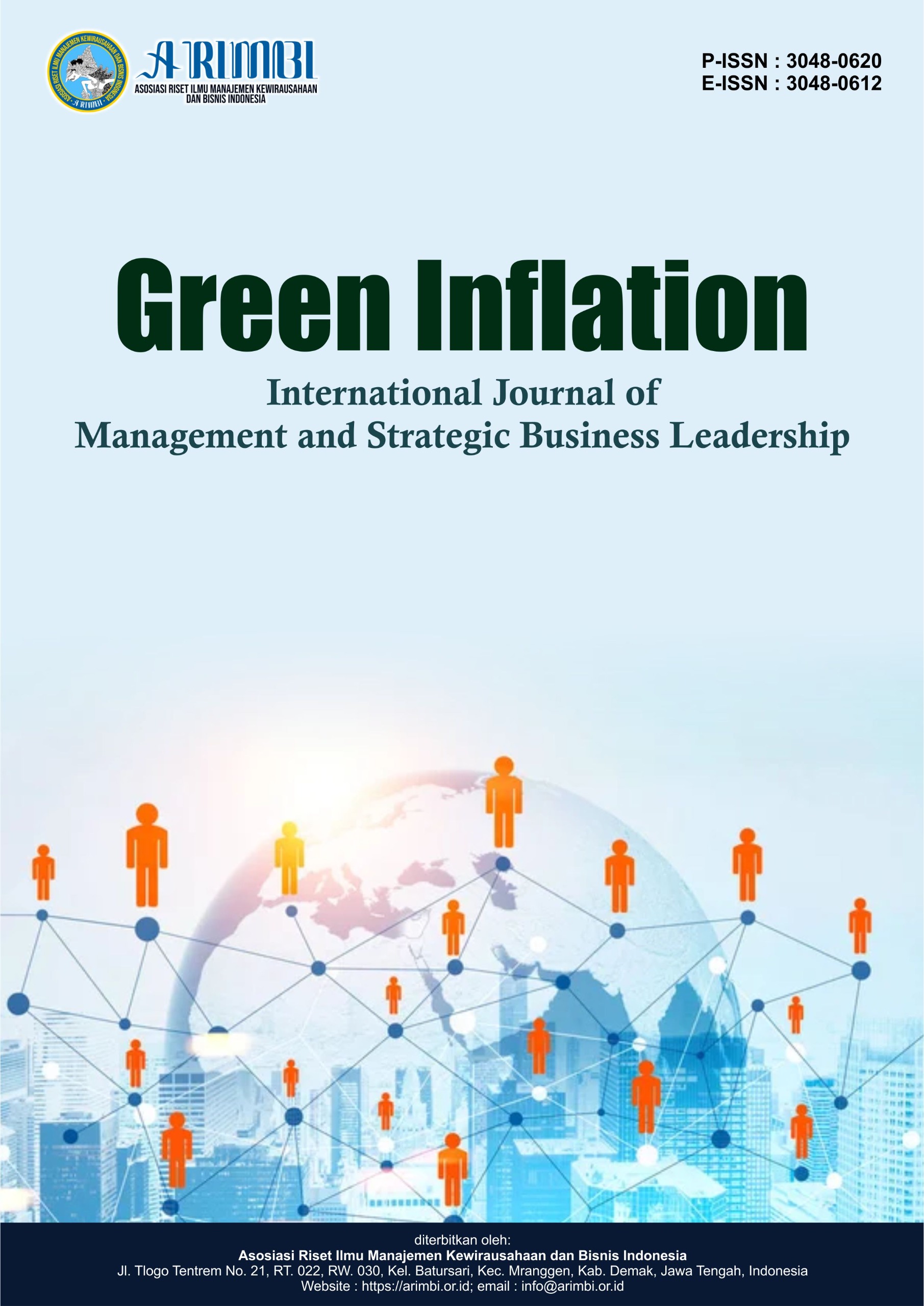Effect of Workload and Competence on Nurses’ Performance with Supervision Moderation in Cengkareng
DOI:
https://doi.org/10.61132/greeninflation.v2i3.539Keywords:
Nurse Competence, Nurse Performance, Structural Equation Modeling (SEM), Supervision, WorkloadAbstract
Introducion The performance of nurses is a critical determinant of hospital service quality, influenced by multiple factors such as workload, competence, and supervision. This study aimed to analyze the effect of workload and nurse competence on nurse performance with supervision as a moderating variable at X Hospital. Methods The research employed a quantitative approach with a causal survey design. Data were collected using structured questionnaires distributed to 176 nurses and analyzed through Structural Equation Modeling (SEM) with SmartPLS 4.0. Result The findings revealed that both workload and competence significantly influenced nurse performance, with competence showing a strong positive effect. Workload was also found to have a significant effect on supervision, and nurse competence significantly enhanced supervision quality. However, supervision did not function as a moderating factor in the relationship between workload and nurse performance, nor between competence and nurse performance. Similarly, supervision itself was not significantly associated with nurse performance. The coefficient of determination showed that workload, competence, and supervision jointly explained 60% of nurse performance, while the remaining 40% was influenced by other unmeasured factors. Conclusion, workload and competence are proven to be direct determinants of nurse performance, whereas supervision in its current form does not enhance these effects. Hospital management should therefore focus on optimizing workload distribution, strengthening nurse competencies through continuous training, and reformulating supervision methods to be more participatory and supportive. These strategies are expected to improve the quality and effectiveness of nursing services and ensure sustainable improvements in hospital performance outcomes.
Downloads
References
Abin, D. G., Mandagi, D. W., & Pasuhuk, L. S. (2022). Influence of brand image on customer attitude, intention to purchase, and satisfaction: The case of start-up brand Pomie Bakery. Enrichment: Journal of Management, 12(5), 3908-3917. https://enrichment.iocspublisher.org/index.php/enrichment/article/view/960
Ateeq, A., Alzoraiki, M., Milhem, M., & Al-Absy, M. (2023). Impact of employee loyalty on job performance: Mediating role of job satisfaction on the example of Zain company, Bahrain. Problems and Perspectives in Management, 21(2), 44-55. https://doi.org/10.21511/ppm.21(2).2023.44
Iqbal, A., Tufail, M. S., & Lodhi, R. N. (2015). Employee loyalty and organizational commitment in Pakistani organizations. European Academic Research. https://www.eajournals.org/wp-content/uploads
Andrews, H. A., & Roy, C. (2002). The Roy Adaptation Model: The definitive perspective. Upper Saddle River, NJ: Pearson.
Benner, P. (1984). From novice to expert: Excellence and power in clinical nursing practice. Menlo Park, CA: Addison-Wesley. https://doi.org/10.1097/00000446-198412000-00027
Benner, P., Sutphen, M., Leonard, V., & Day, L. (2009). Educating nurses: Call for transformation. San Francisco: Jossey-Bass.
Hemman, E. A. (2004). Professional development in nursing. New York: Springer Publishing Company.
Herawati, H., Setyadi, D., Michael, M., & Hidayati, T. (n.d.). The effect of workload, supervisor, and coworker supports on job performance through job satisfaction. International Journal of Financial, Economics, and Business. https://journal.srnintellectual.com/index.php/ijfeb/article/view/168
Fukada, M. (2028). Nursing competency: Definition, structure, and development. National Center for Biotechnology Information (NCBI). https://www.ncbi.nlm.nih.gov/pmc/articles/PMC5871720
Nursalam. (2015). Manajemen keperawatan: Aplikasi dalam praktik keperawatan profesional. Jakarta: Salemba Medika.
Orem, D. E. (2001). Nursing: Concepts of practice (6th ed.). St. Louis, MO: Mosby.
Roy, C. (2009). The Roy Adaptation Model (3rd ed.). Upper Saddle River, NJ: Pearson.
Roy, C., & Andrews, H. A. (1999). The Roy Adaptation Model. Stamford, CT: Appleton & Lang.
Spencer, L. M., & Spencer, S. M. (1993). Competence at work: Models for superior performance. New York: John Wiley & Sons.
Sullivan, E. J., & Decker, P. J. (2005). Effective leadership and management in nursing. Upper Saddle River, NJ: Pearson Prentice Hall.
Taylor, S. G., & Renpenning, K. M. (2001). Nursing theories & nursing practice (2nd ed.). Philadelphia: F.A. Davis Company.
Watson, J. (2008). Nursing: The philosophy and science of caring. Boulder, CO: University Press of Colorado.
Watson, J. (1999). Postmodern nursing and beyond. Edinburgh: Churchill Livingstone.
Watson, J. (2006). Caring theory as an ethical guide to administrative and clinical practices. Indianapolis: Sigma Theta Tau International. https://doi.org/10.1097/00006216-200601000-00008
Basem, Z., Norawati, S., Kamal, M., Munika, R., & Hastuti, S. (2022). The effect of compensation, workload, and work-life balance on employee loyalty with job satisfaction as a moderating variable. PubMed. https://pubmed.ncbi.nlm.nih.gov/38380132
Downloads
Published
How to Cite
Issue
Section
License
Copyright (c) 2025 Green Inflation: International Journal of Management and Strategic Business Leadership

This work is licensed under a Creative Commons Attribution-ShareAlike 4.0 International License.




